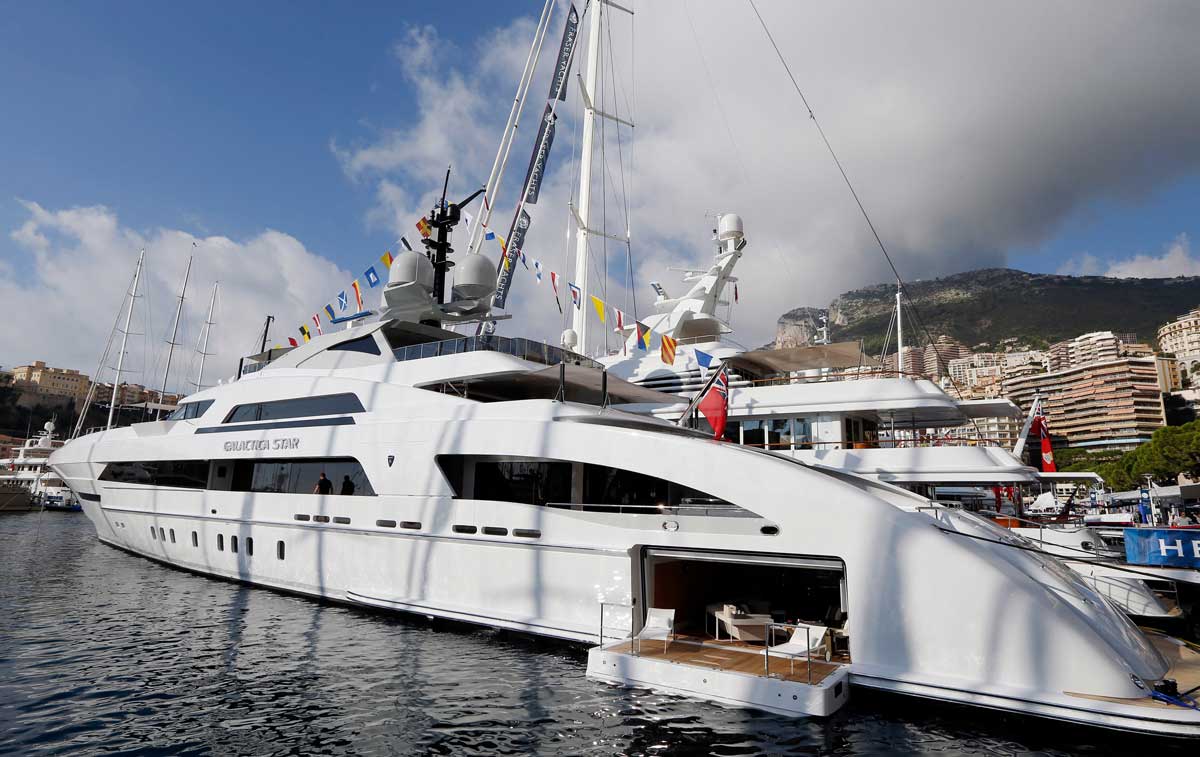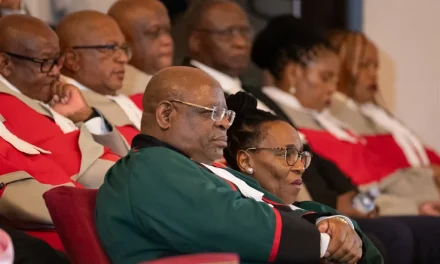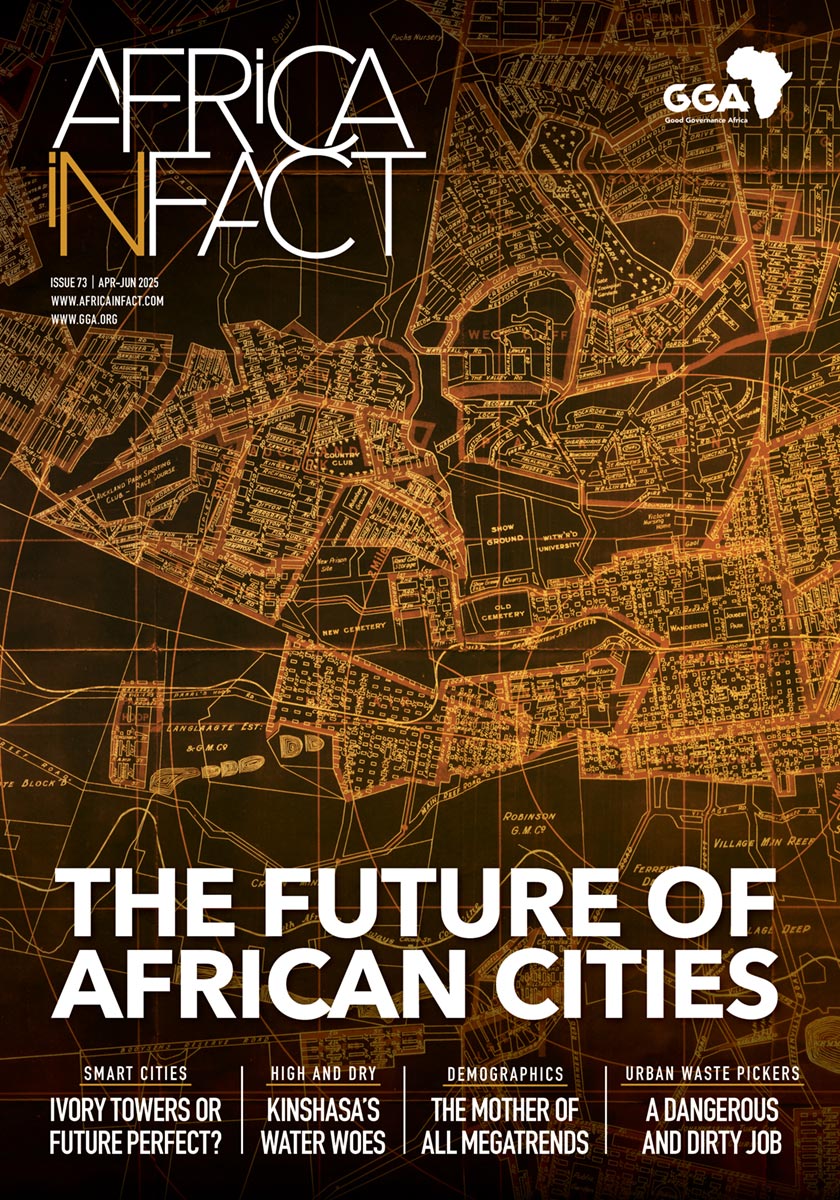On 10 January this year, the United States agreed to repatriate $53 million in stolen funds to Nigeria. These funds were said to have been part of the money realised by the US from the sale of Galactica Star, a 65m superyacht allegedly linked to former Nigerian Minister of Petroleum Resources Diezani Alison-Madueke, who was accused of embezzling billions of dollars through corrupt dealings in the oil sector.
The repatriation agreement provided for at least $50 million of the returned funds to be channelled to rural electrification projects, while the remaining sum would be channelled through Nigeria’s contribution to the International Institute for Justice and the Rule of Law. Circumstances surrounding this asset-recovery case raise several aspects of challenges that victim countries experience in the repatriation of stolen assets and the conditions imposed for repatriation by enabling countries.

The yacht Galactica Star moored at Port Hercules in Monaco. Photo: Valery Hache / AFP
Conditions imposed by the US in this regard, while ensuring the recovered funds were not misappropriated or re-looted, highlight the tension between victim countries exercising their sovereignty in determining what to do with such recoveries and the need for some degree of oversight. While it can be argued that conditions imposed on victim countries are intended to prevent “re-looting” and therefore safeguard public interest, they run the risk of prolonging the asset repatriation process and contributing to bureaucratic inefficiencies.
There are five main stakeholders in international asset recovery: perpetrators, victim countries, enabling countries, international organisations and non-governmental organisations (NGOs). These entities play crucial roles in the world of illicit financial flows (IFFs).
While victim countries suffer, a parallel reality is financial hubs that facilitate and protect the flow of illicit wealth. Developed nations with robust banking sectors, favourable tax policies, and regulatory loopholes often serve as safe havens for IFFs. The involvement of these institutions, knowingly or through negligence, adds a layer of complexity.
Some jurisdictions have taken steps towards greater financial transparency, but enforcement remains inconsistent, allowing IFFs to persist. Are nations committed to combating financial crime or do they benefit too much from it?
NGOs such as Transparency International, Global Witness, and the Basel Institute on Governance play an essential role in exposing corruption, supporting whistleblowers, pushing for greater accountability in asset repatriation and advocating for stronger financial oversight.
Several intergovernmental organisations, such as the United Nations Office on Drugs and Crime (UNODC), the World Bank’s Stolen Asset Recovery (STAR) Initiative, and the Financial Action Task Force (FATF) have positioned themselves as key players in the fight against IFFs with the aim to enhance international cooperation and strengthen the capacities of member states in asset recovery. But many argue that these organisations lack enforcement mechanisms, relying on national governments to implement recommendations that are often deprioritised.
Political considerations often overshadow the principles of justice and equity in the realm of illicit asset recovery. The reluctance of some enabling countries to repatriate assets can be attributed to geopolitical interests, diplomatic relations, or the presence of influential individuals. This politicisation of asset recovery serves as a barrier to meaningful progress.

Former OPEC president Diezani Alison-Madueke arrives at Westminster Magistrates’ Court in London on October 2, 2023. Photo: Henry Nicholls / AFP
While international frameworks provide mechanisms for asset recovery, the process of tracing, recovering, and repatriating illicit funds to victim countries is bristling with technical and procedural obstacles. The requirement for victim countries to prove the illegal origin of assets beyond reasonable doubt, amidst a lack of cooperation or outright obstruction from some jurisdictions, significantly impedes recovery efforts.
There are primarily two legal pathways by which illicit funds or assets can be recovered: Through a conviction-based forfeiture (CBF) based on a criminal conviction, and through a non-conviction-based forfeiture (NCBF) in which law enforcement demands the asset-holder prove the bona fide provenance of the assets.
CBF is often ineffective in cases where the accused is at large, has died, or enjoys political protection. High evidentiary burdens, prolonged legal proceedings, and strategic legal manoeuvring further complicate the process of asset recovery through this process.
NCBF, on the other hand, allows for the forfeiture of assets based upon reasonable suspicion by law enforcement agencies that such assets were prima facie proceeds of unlawful conduct. While this method is widely endorsed by the FATF and the UNODC, it has sparked concerns over the lack of due process and potential human rights violations. While CBF ensures legal rigor, it is often impractical; NCBF offers a faster alternative, but concerns over fairness persist.
Although enabling countries acknowledge their obligation to cooperate in the repartition of stolen assets, concerns over lack of transparency in governance, and/or the likelihood of re-looting often leads to the imposition of conditions to govern the application of the repatriated asset.
Several victim countries argue that the recovered funds belong to their citizens and should therefore be returned unconditionally. Many see the conditional repurposing of the repatriated funds as a violation of their sovereignty. Enabling countries, frequently hesitate to release assets without oversight, fearing that funds may once again be misappropriated. As a result, they negotiate for the repurposing of such assets with victim countries, which contributes to the delay in repatriating the assets.
In response to these challenges, organisations such as STAR and UNODC have attempted to mediate through structured agreements that ensure recovered funds are allocated to development projects. At the heart of this issue lies a fundamental question: who should control recovered assets, and under what conditions should they be returned?
Stolen asset recovery is not merely a legal process – it is a deeply political one. The absence of a unified international policy governing transactions in this area creates significant obstacles in intelligence sharing, evidence gathering, and the enforcement of recovery mechanisms. Mutual legal assistance (MLA) agreements, designed to facilitate cooperation between jurisdictions, are often hindered by bureaucratic inefficiencies and conflicting legal standards. Cases such as Nigeria’s prolonged recovery of the Sami Abacha loot from Switzerland which lasted more than 2 decades exemplify how these challenges can stall asset repatriation for years.
Banking secrecy laws in financial hubs such as Switzerland, the Cayman Islands, and Luxembourg have historically shielded illicit assets, making them difficult to trace and recover. While regulatory reforms – such as Switzerland’s Foreign Illicit Assets Act (FIAA) – have been introduced, enforcement remains inconsistent. High-profile cases, including Guinea Teodoro Nguema Obiang Mangue’s luxury asset seizures, underscore the difficulties in tracing and reclaiming illicit wealth.

Photo: pexels.com
International Conventions such as the United Nations Convention Against Corruption (UNCAC) and the United Nations Convention Against Transnational Organized Crime (UNTOC) provide a legal framework for asset recovery. However, selective compliance by signatory states and weak enforcement mechanisms significantly limit their effectiveness. In many cases, victim countries remain at the mercy of legal systems never designed to prioritise their interests. Is the current legal framework genuinely committed to justice, or does it simply serve to protect the status quo?
Beyond legal complexities, the financial cost of recovering stolen assets remains a major point of contention. Enabling countries often deduct expenses incurred by them during the investigation of the repatriated funds.
This practice has been widely criticised by the African Union (AU), which, through the Common African Position on Asset Recovery (CAPAR), has insisted that victim countries should not bear the financial burden of retrieving assets that were unlawfully taken from them. Instead, they argue that enabling countries should absorb these costs as a form of reparations for having facilitated illicit financial flows.
However, enabling nations maintain that asset recovery is a resource-intensive process requiring extensive legal proceedings, forensic investigations, and intergovernmental negotiations. As long as no standardised approach exists, disputes over cost-sharing will continue to complicate the already arduous path to repatriation.
One of the most contentious aspects of asset recovery is the conditional repurposing of recovered funds – where enabling countries stipulate how the assets being repatriated should be utilised by the receiving state. Proponents argue that such conditions promote transparency and prevent the misappropriation of funds, while recipient nations often view them as an infringement on their sovereignty.
A key example was Nigeria’s Sani Abacha loot, wherein Switzerland insisted on allocating recovered funds to specific development projects managed by international organisations. Similarly, when the US recovered assets stolen by Teodoro Nguema Obiang Mangue, it directed the funds toward COVID-19 response efforts in Equatorial Guinea. However, many nations in Africa, Latin America, and Asia view these conditions as reinforcing historical power imbalances, with wealthier states maintaining influence over their financial sovereignty.
Bridging this divide requires a more balanced approach – one that respects national sovereignty while ensuring accountability in the use of repatriated funds. A more effective model could involve:
- Transparent domestic frameworks in victim countries that guarantee public oversight of recovered assets.
- International monitoring partnerships that provide guidance without imposing unilateral conditions.
- A standardised global approach to cost-sharing, ensuring that recovery expenses do not disproportionately burden victim nations.
Despite international legal frameworks aimed at facilitating the recovery of stolen assets, the process remains slow, fragmented, and deeply politicised. However, the road to reform is riddled with diplomatic tensions, legal hurdles, and power imbalances between African nations and enabling countries.
In response to these challenges, the AU introduced CAPAR in February 2020 as a framework to streamline and strengthen Africa’s approach to stolen asset recovery. The initiative aims to:
- Promote African ownership of the asset recovery process, ensuring repatriated funds align with national development priorities.
- Push for international legal reforms, including the harmonisation of asset recovery procedures to create a more efficient and predictable system.
- Address capacity gaps, equipping African nations with the necessary technical expertise to navigate complex financial investigations and negotiations.
- Enhance transparency and accountability, ensuring that recovered funds are effectively managed and allocated to public benefit.
While CAPAR represents a bold step toward African-led asset recovery, its success hinges on the willingness of global financial institutions and enabling countries to cooperate. Recognising that external reforms alone will not solve the problem, African leaders have proposed more Afrocentric solutions to strengthen the continent’s position in asset recovery negotiations. They include:
- A centralised African Asset Recovery Agency (AARA) to provide technical assistance, coordinate legal efforts, and act as a unified voice for African nations;
- A Dispute Resolution Mechanism to mediate conflicts between African nations and enabling states, preventing legal and diplomatic deadlocks;
- Capacity-building initiatives to strengthen financial institutions and anti-corruption agencies to ensure African nations can effectively engage in asset recovery proceedings.
These initiatives highlight Africa’s determination to move beyond reliance on western-led legal processes, which have historically favoured financial secrecy over restitution.
Recognising the systemic flaws in the current asset recovery landscape, international bodies have also pushed for reforms. The United Nations High-Level Panel on International Financial Accountability, Transparency, and Integrity (FACTI Panel) has called for: public registries of beneficial ownership to prevent illicit funds from being hidden in complex corporate structures, and stronger international cooperation in mutual legal assistance to expedite asset recovery cases.
International NGOs have also called for and spearheaded the establishment of an International Anti-Corruption Court (IACCourt), intended to serve as a global judicial body with the power to try grand corruption cases and ensure the swift and effective return of stolen assets to victim countries. If properly structured, the proposed IACCourt could complement African-led efforts like CAPAR, creating a legal backstop for disputes over stolen wealth. However, for the IACCourt to be effective, African states must play an active role in shaping its mandate.
Stolen asset recovery has become a focal point of global anti-corruption efforts. Two prominent models have emerged in the debate: the proposed IACCourt’s Assets Chamber model and the AU’s proposed AARA. The fundamental distinction between the two models lies in their jurisdictional reach, the IACCourt being global and the AARA continental. Critics highlight that the AARA’s regional limitation poses a major challenge – much of the stolen wealth is hidden in offshore accounts and financial hubs outside of Africa.
Without binding international cooperation mechanisms, the AARA may struggle to enforce asset repatriation from foreign jurisdictions, while the IACCourt’s global scope would make it significantly more effective at tracking and retrieving assets which have been funnelled through complex international financial networks. Additionally, the AARA’s institutional link to the AU, which has historically struggled with inconsistent enforcement among member states, is a likely weakness, while the IACCourt would, by the nature of its functioning independently of national governments, be insulated from domestic political pressures.
Also of concern is that the AARA model has yet to outline robust safeguards to prevent re-looting. Without stringent oversight, the risk remains that politically connected elites could divert recovered assets, defeating the very purpose of asset recovery efforts. While the AARA may seek to impose conditions on how funds are used, its ability to enforce these conditions remains uncertain.
Ultimately, for asset recovery to be truly effective, it must go beyond rhetoric and weak enforcement. The proposed IACCourt’s independent legal framework, international reach, and emphasis on transparency positions it as a superior and more sustainable approach. If the goal is to create a system where no corrupt leader can safely conceal such looted assets, then the proposed IACCourt model, to my mind stands out as the most viable solution.

Dr Charles Adeogun-Phillips SAN
Dr Charles Adeogun-Phillips SANis lead counsel at Charles Anthony lawyers from where he practices in International anti-corruption law and has advised the Nigerian Government in several stolen asset recovery matters. He also practices international law from Guernica 37 Chambers in London.
He is Vice-Chairman of the Board of Integrity Initiatives International (III).













